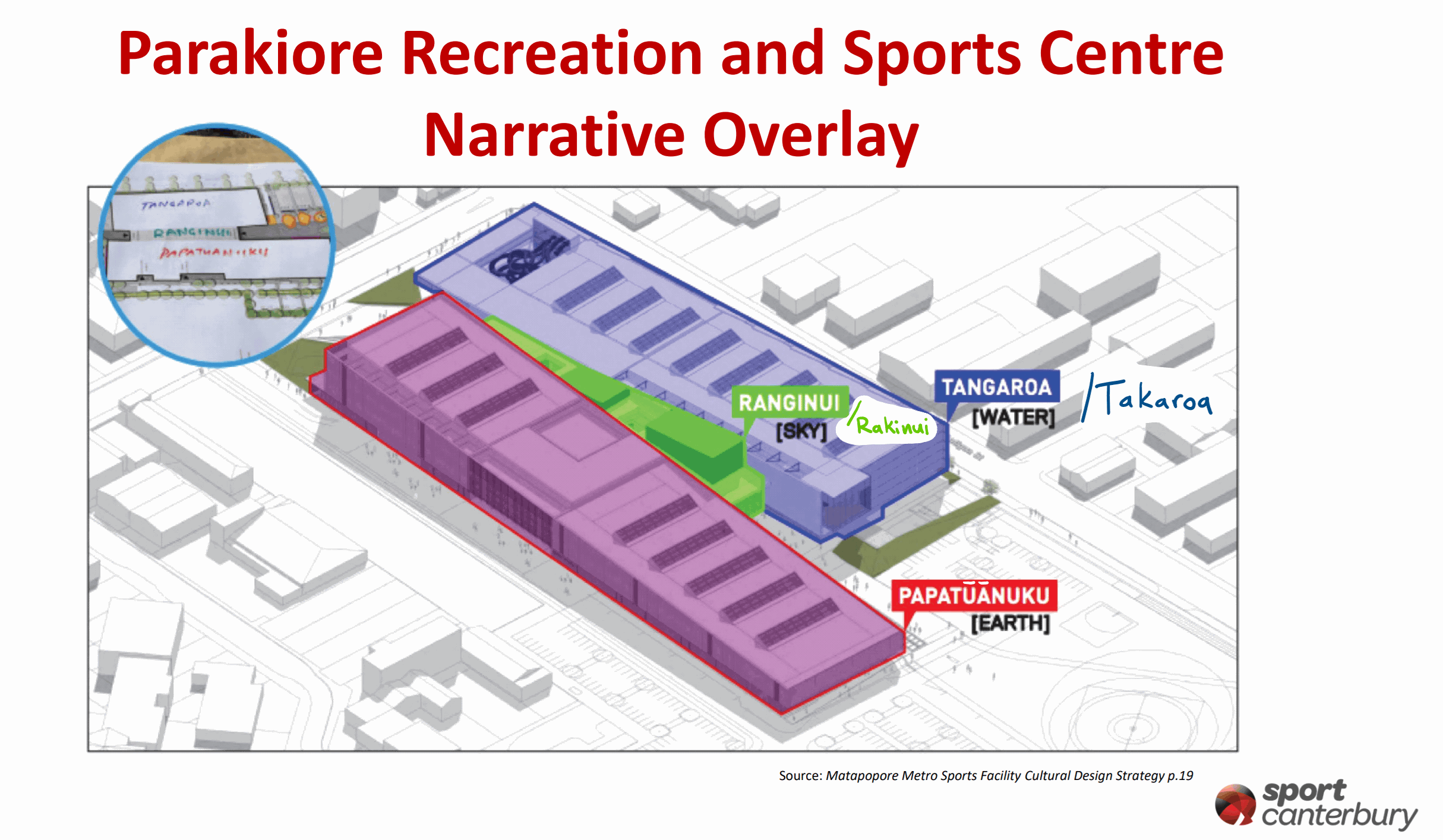

Healthy Families Ōtautah Farewell to Parakiore Champion
Indigenous Systems Return

In June the Healthy Families Ōtautahi team and Sport Canterbury farewell Systems Innovator, Jason Pemberton, who will leave behind a raft of knowledge about local mana whenua narratives and their relationship to the mahi we carry out as an organisation.
During his time with us, he has worked on many projects in the overlapping spaces between Māoridom and te ao Pākehā, including work that lifts up cultural narratives of Parakiore – the Ngāi Tuāhuriri tīpuna and the Recreation and Sport Facility named after him.
“As a city, we have a wonderful foundation of histories and narratives brought forward by Ngāi Tahu and Ngāi Tūāhuriri through Matapopore, there are heaps of opportunities with the post-earthquake rebuild to understand and work with these in a meaningful way.
“Working specifically on the Parakiore Recreation and Sport Centre has been awesome, there is a lot of public information generously gifted by mana whenua which we can learn from and work with. Working with Sport Canterbury and the other major tenants to understand and incorporate these into the fitout of each of our spaces within the facility has shown how eager people are to understand local pakiwaitara (narratives, stories) and how the knowledge within them can be a guide for how we want to work together and how the facility as a whole can operate” says Pemberton.
Prominent local designer Morgan Mathews-Hale (Ngāti Irakehu, Ngāti Mako) has been central to the creative process of interpreting these narratives in a way that connects with the individual identities of tenant organisations.
“Morgan has been a really valuable partner for us, not only because of her obvious creative talents but also her experience with projects like this” Jason adds, reflecting on Morgan’s major creative input into Parakiore and other anchor projects around the city such as Tūranga.
Jason’s role in all this has been to digest information from many angles and then create signposts and connections to knowledge relevant to those organisations that will call Parakiore home.
“My role has really been about communication – initially with Matapopore and then internally with Sport Canterbury, the other tenants, and the City Council. It’s really been a process of helping people navigate and understand this public information about narratives, and ensuring the narratives’ mana are upheld in representation through the buildings and in how we work when everyone moves in.”
“I’ve been on my own te reo Māori and self-decolonisation journeys for a few years – work in progress – but this has definitely helped with the murkiness of communicating between te ao Māori and predominantly Pākehā organisations in a mana-enhancing way.”
As part of this project, Jason has been running basic education sessions over with each of the organisations who will be tenants in the facility and brokering relationships for further work in those spaces. There will be approximately 350 people working onsite at Parakiore every day, and the goal is to enable the great majority of those people to understand and speak to the narratives of the building. This includes stories about who Parakiore was – a Ngāi Tuāhuriri ancestor and the son of Tū Rākautahi who founded Kaiapoi Pā – and an excerpt of Te Orokohaka o Te Ao, the Ngāi Tahu story of the creation of the world including Takaroa, Rakinui, and Papatuānuku – the Atua or gods of waterways, the sky, and the earth.
“It’s been about supporting each of these organisations to engage with the narratives, include aspects in their respective tenancies and fitout, and eventually be able to point to different elements in the building and let those be a guide for ‘how and why we do things around here’.” he says. Looking from the street one can already see different patterns representative of the three Atua baked into the external concrete facades of the three sections of the facility.
In this role, his mantra has essentially been about allyship and supporting existing energy behind mana whenua initiatives. There is always a risk of overloading or relying on Māori to provide knowledge over and above existing roles or commitments, so leveraging existing public material endorsed by mana whenua is a helpful strategy for self-education. Working closely with people like Morgan then provides support and safety on both sides to avoid misinterpretation or appropriation.
“It’s thinking about how we can meaningfully support organisations to step forward together – both Māori and non-Māori – in a way that respects where each of them are at. Practically speaking we were wanting to surface and celebrate local heritage and narratives without putting extra load on a small number of people who are already tapped out,” he adds.
Earlier this year Sport Canterbury held their first Mihi Whakatau to welcome new staff and their whānau into the fold and Jason will be in the first group farewelled with a Poroporoaki. It is hoped that, once moved in to Parakiore, more and more tīkanga can be adopted by Sport Canterbury, Christchurch City Council, and other tenants. “At the end of the day that’s what it’s all about. Ko Aotearoa tēnei, nē? What’s good for Māori is good for everyone, let’s just keep making things better.”
Follow Healthy Families Ōtautahi on Facebook - Click here
Article added: Monday 23 May 2022

